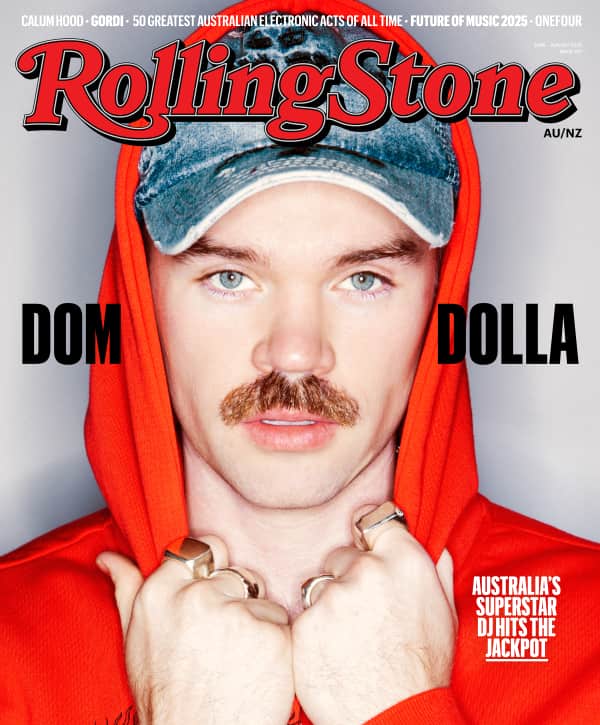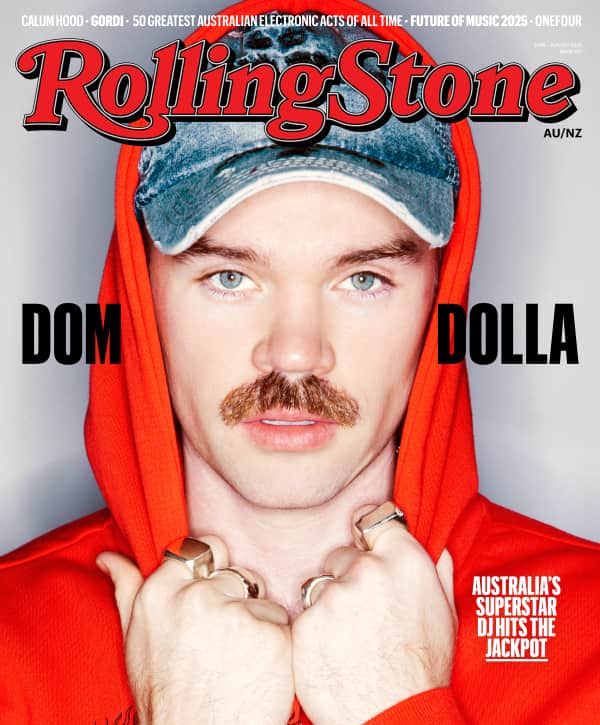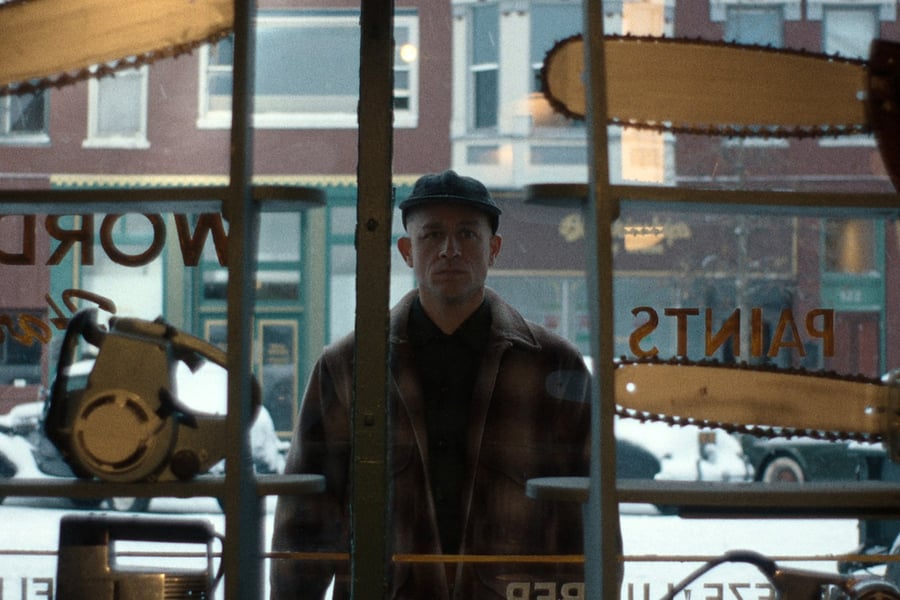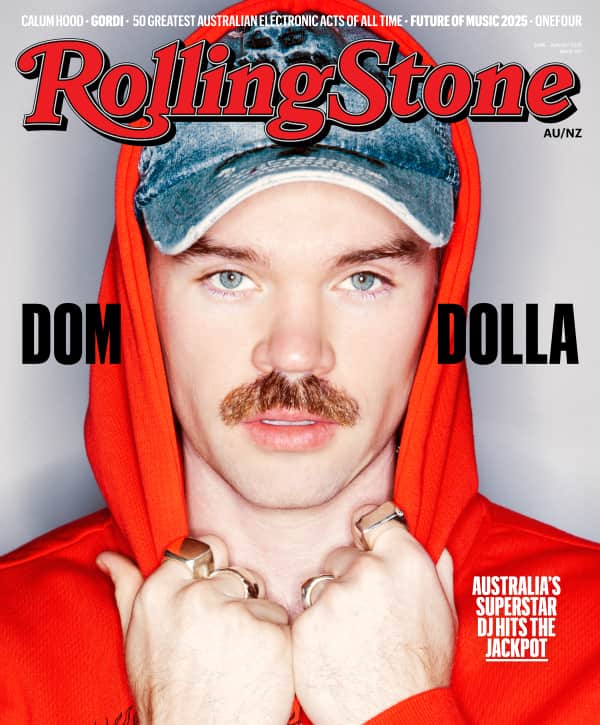Ryan Murphy loves to take what the audience thinks they know and turn it on its head. He did it with the O.J. Simpson story, making us question whether prosecutor Marcia Clark had been unfairly maligned. He did it with the Clinton-Lewinsky affair, presenting the story in a way that acknowledged both Monica’s sexual interest and Bill’s ultimate responsibility. And just last year he did it with the Menendez brothers, re-examining their story with enough power and resonance that the California courts have actually resentenced them, allowing the possibility of parole.
So it was somewhat surprising to hear that the latest installment of Netflix’s anthology series Monster — produced by Ryan Murphy and in this case written entirely by his longtime collaborator Ian Brennan — would focus on the murderer and grave robber Ed Gein. There seemed to be little to reassess about the “Ghoul of Plainfield,” as he was known, a killer who was infamous for dressing up in the skin of dead bodies and keeping a house full of grotesque oddities made from human parts in his Wisconsin hometown between the mid-Forties and mid-Fifties. After all, he was notoriously the inspiration for horror staples including Psycho and Silence of the Lambs. (And as when Murphy cast Harry Styles as the serial killer and cannibal Jeffrey Dahmer, people were a little put off by the decision to put the extremely conventionally attractive Charlie Hunnam in the lead role.)
Of course, Ryan Murphy Productions found a way. Not only that, for its third Monster installment, the team added a new twist. Monster: The Ed Gein Story goes beyond shining a light on the titular subject’s crimes; by incorporating the stories that inspired him, as well as the stories he went on to inspire, it puts a mirror to those who consume and are fascinated by the gruesome true-crime genre. “This whole series, it turns the camera right on us,” Brennan told Netflix’s house site, Tudum. “It really matters what you look at and the images and stories you consume. They do stick with you, and they do have an impact.”
Still, for the uninitiated, it can be hard to navigate how much of Gein’s story here is fictionalized, how much is exaggerated, and how much is shockingly true. Here’s a breakdown to help separate fact from fiction.
Gein’s mother was cruel and domineering.
The most important relationship in Gein’s life was the one he had with his mother, Augusta Gein (played in the series by Laurie Metcalf). Augusta was, indeed, overbearing and fanatically religious, and forbade her two sons from having any relationships with women, who she saw as wanton sinners. And while there’s no evidence she repeated the phrase as much as she does in the show, she did reportedly tell her son that “only a mother could love you,” according to the seminal book on Gein, Deviant: The Shocking True Story of the Original ‘Psycho’ by Harold Schechter. As depicted in Monster, Augusta did suffer a fatal stroke after freaking out at a local woman she believed to be living in sin, and following her death in 1945, Gein did try (and fail) to exhume her body from a local graveyard, as seen in the show.
Gein was never officially tied to his brother’s death.
Gein’s older brother Henry (played by Hudson Oz) makes a brief appearance in the first episode, only for Ed to murder him. In the show, after Henry threatens to move in with a twice-divorced woman, Gein whacks Henry on the head with a log, drags his body onto the family farm’s property, then stages a brush fire to burn his body. In reality, Ed claimed that he and Henry were fighting a brush fire when Henry died (though Henry had suggested he might move out to be with a paramour). Police ruled out foul play and determined that Henry’s official cause of death was asphyxiation leading to heart failure. After Ed’s crimes were exposed there was some lingering suspicion, but he never confessed to killing his brother.
Adeline Watkins ultimately denied ever dating Gein.
The show’s depiction of a woman named Adeline Watkins (Suzanna Son) as Gein’s girlfriend takes a lot of liberties. While there was a woman by that name living in Plainfield during the time of Gein’s crimes, the extent to which she knew and/or interacted with Gein is unclear. In a November 1957 interview with the Minneapolis Tribune, Watkins claimed that she and Gein had a 20-year relationship and that he proposed to her on their last date in February 1955, but she turned him down. She also described him as being “good and kind and sweet.” However, Watkins contacted the editor of the local paper, the Plainfield Sun, a few days later, denying having a 20-year romance with Gein, explaining that they were just friends and claiming she didn’t know him well until 1954.
Love Music?
Get your daily dose of everything happening in Australian/New Zealand music and globally.
The Gein farmhouse was a dilapidated house of horrors.
In addition to Gein’s family, Monster also provides an inside look into the Gein family farmhouse, both before and after his crimes. Both in real life and on the show, the house was rundown in the 1940s and 1950s, as the family hadn’t been able to afford any improvements since moving in in 1914. For instance, it wasn’t equipped with electricity or indoor plumbing. Monster also accurately depicts the farmhouse’s interior following Gein’s exhumation of nine women’s bodies: a cluttered hoarding situation complete with body parts in boxes and bags and masks made of human faces hanging on the wall.
Gein was obsessed with a Nazi known as the “Bitch of Buchenwald.”
According to Schechter, Gein did have a fascination with Ilse Koch, who was accused of some of the worst atrocities of the Holocaust, including using human skin to make lampshades and book bindings. “His diseased imagination fed by accounts of Ilse Koch and her human-skin artifacts, Gein had busied himself with the production of similarly abhorrent objects,” Schecter writes. And while it’s unclear if there would have been an illustrated comic book detailing her crimes, as there is in the show, there were certainly post-war pulp magazines that chronicled the accusations against her in brutal detail, alongside claims that she was a nymphomaniac who also delighted in the torture and pain of others.
This cartoonish version of Koch is what’s presented in Monster, and was, in fact, part of what convinced German actress Vicky Krieps, whose grandfather died in the Holocaust, to take the role in Murphy’s adaptation. “What helped me was knowing that it’s based on a comic character, and therefore Ed Gein’s fantasy of her is through the comic,” she told Variety. “That was freeing to me, and why I felt I can do this, because this is actually clearer, portraying someone who’s larger than life.”
Koch was never convicted of mutilating the corpses of the people who were murdered in Buchenwald; though some gruesome items were discovered there, there was no proof that they were connected to her. She was, however, convicted of war crimes and crimes against humanity for her involvement with the camp. It seems unlikely that she would have been there when the Americans marched in to liberate it — as is depicted in Monster — since her husband, the camp’s director, had been removed from duty in 1941 on suspicion of corruption and embezzlement, and executed by the Germans in 1945. (She did, as is depicted in the show, die by suicide in 1967 in her cell in American-occupied West Germany.)
In recent years, there has been a movement to rethink Koch’s involvement in the war, with the 2023 book Ilse Koch on Trial: Making the Bitch of Buchenwald arguing that though she was indeed a criminal, her sexualized, ghoulish persona had been trumped up to become a scapegoat for the German people, a way to pin the Holocaust’s atrocities on a single individual.
Koch wasn’t the only Nazi that Gein read about. According to Schecter, he was also interested in Irma Grese, known as the “Hyena of Auschwitz.” Gein also read voraciously about “cannibals and headhunters,” Schecter writes, noting that he was particularly interested in the process of shrinking heads.
Gein did rob graves and collect “trophies” from the bodies.
The depiction of Gein’s treatment of the women’s bodies he exhumed from a local cemetery straddled fact and fiction. Gein did confess to robbing nine female bodies from their graves, as mentioned in the show. Disturbingly, the scenes featuring all of the “trophies” he removed and collected from these corpses are also rooted in truth. For example, police did find a box containing nine vulvas, a “woman suit” (a vest made out of a women’s torso and pants made out of a woman’s legs), several masks made of women’s faces, four chairs made of human skin, and bowls made out of half of a human skull in the Gein farmhouse following Ed’s arrest.
Gein was likely not a necrophiliac.
There’s no indication that Gein’s obsession with women’s dead bodies included sexual depravity. While Monster portrays Gein engaging in necrophilia with at least one of the corpses, in real life, he denied that allegation, explaining that the odor of the bodies was offensive to him. There’s also no evidence that Gein was a cannibal or distributed human flesh to neighbors, telling them it was venison, as shown in Monster. As Chloë Manon, co-owner and curator at the Graveface Museum, a collection of true-crime exhibits in Savannah, Georgia, previously told Rolling Stone, of the nine women Gein exhumed from their graves, most had already been embalmed — suggesting it’s highly unlikely that he would have consumed them.
Only two murders have been definitively attributed to Gein.
Though Gein is shown committing numerous murders throughout the show, there are only two people that we know he killed: the bartender Mary Hogan, who was friends with Gein, and Bernice Worden, who ran the local hardware store. He was only ever tried for Hogan’s murder, and though he was initially found guilty, a subsequent hearing determined he was not guilty by reason of insanity, and he was sentenced to spend the rest of his life in a facility for the criminally insane. As for Hogan’s murder, Gein confessed to the crime. These two women, it should be noted, were physically very similar — middle-aged and sturdy — to his late mother. (In the show, this doesn’t necessarily come through; Metcalf looks slight next to Hunnam’s bigger frame.)
While it’s possible that Gein killed his brother, all the other murders in Monster are a fabrication, dramatized to show his effect on American horror culture. Several times throughout the show, the “real” Ed is transposed into scenarios straight out of the movies that he would go on to inspire, including Psycho and The Texas Chainsaw Massacre. He’s shown slipping into their personae — stabbing Adeline to death a la Psycho (even though that scene famously showed no actual violence) and chasing a couple of hapless hunters through a field with a chainsaw.
Authorities never pinned the disappearance of Evelyn Hartley on Gein.
Evelyn Hartley, portrayed by Addison Rae in the show, was, in fact, a real young woman who vanished while babysitting in Wisconsin. However, her disappearance occurred about two hours away from where Gein lived, and he was cleared of any involvement back in 1957. So his kidnap and torture of Hartley in Monster is entirely fictionalized. Many viewers may have assumed that Monster created the detail that he, too, looked after children, but according to Schechter, he did babysit for local kids — and even may have performed some magic tricks; but that was before his mother died, and long before he started digging up bodies.
Gein was diagnosed with schizophrenia.
In Monster, Gein’s schizophrenia diagnosis provides an explanation for his crimes. He received the same diagnosis in real life in December 1957, following his arrest a month prior. It was the consensus of a panel of six doctors who evaluated Gein after he was questioned extensively about his past. The physicians and psychiatrists reached this conclusion on the basis that Gein continued to hear his mother’s voice long after she died, saw faces in piles of leaves, was delusional, and couldn’t tell the difference between right and wrong. As a result, the panel determined that he was “legally insane” and “not competent to stand trial.” (A decade later Gein would stand trial, and a judge would come to the conclusion that he was not guilty by reason of insanity.)
Gein was fixated on a transgender woman named Christine Jorgenson.
Monster includes the story of Christine Jorgensen: a transgender woman who had served in the U.S. army during World War II, then traveled to Denmark in 1950 for gender-affirming treatments, and became a celebrity upon her return to the United States. In the show, Adeline shares a newspaper article about Jorgensen with Gein, who instantly becomes interested in her life and transition.
Later in the series, Gein hallucinates a conversation with Jorgensen during which they discuss sexual identity. He says that he believes himself to be “transsexual” — then the accepted term for what we would now call transgender — and she informs him that he’s gynephilic, a word describing someone who, regardless of their own gender, is so turned on by the female body that they want to be inside it. Though we don’t know if that was a real diagnosis Gein received, it was something the series creators felt strongly about including, to distance Gein from the current discussion around the trans community. “It was really important for us to make that distinction, to say, ‘Look, these are two very different things,’” Brennan told Tudum. “And it was cool to be able to put it in the mouth of Christine Jorgensen.”
According to Schechter’s book, Gein was indeed aware of and fascinated by Jorgensen, thanks to the extensive media coverage of her transition. “Since childhood, he has often daydreamed about becoming a girl and imagined what it would feel like to have female sex parts instead of a penis,” Schechter writes.
Gein did not have relationships with other famous killers.
In the somewhat clever (but potentially confusing) final episodes, the show taps into another major Netflix true-crime property: Mindhunter. That series, which ran from 2017 to 2019, depicted the early years of the FBI’s Behavioral Science Unit, during which two agents — in the show, fictionalized characters Holden Ford and Bill Tench — traveled the country interviewing notorious murderers, including Ed Kemper and Richard Speck, in an attempt to build a psychological profile of a serial killer.
Ford and Tench were based on Special Agents Robert Ressler and John Douglas, and in Monster, the pair is shown interviewing some of the same killers. When they talk to Jerry Brudos, a.k.a. the “Lust Killer” (who’s portrayed in both series by actor Happy Anderson), he mentions that he was inspired by Gein. Soon after, the viewer meets Speck (Tobias Jelinek), notorious for murdering eight nursing students at a house outside Chicago in the late 1960s. (You might remember him from American Horror Story Season One.) We find Speck performing sex acts in exchange for drugs while imprisoned, talking to his john about how he, too, looked up to Gein. He’s even shown sending Gein fan mail. However there’s no reason to believe that the real Speck had any correspondence with Gein — nor even that he had any admiration for him. “I’m not like anyone else,” Speck told a journalist in 1978. “I”m freakish.”
In Monster, Agents Ressler and Douglas interview Gein, and he helps them find a serial killer who’s on the loose: Ted Bundy (John T. O’Brien). In reality, Bundy was caught because of a routine traffic stop; and while Douglas interviewed Gein, it wasn’t particularly helpful. “I had the opportunity to briefly meet him, but Gein was so psychotic that it really wasn’t much of an interview,” he said in 2017. “Not like the ones I did after with other serial killers. It was really weird: he was working in the leather shop at the prison, this Mendota State Mental Institution.” Instead, this plot point seems to be a way for the Monster creators to flip the story of The Silence of the Lambs, in which serial killer Hannibal Lecter helps the FBI find another killer, Buffalo Bill — who was inspired by none other than Ed Gein.
In the end, like so much of Murphy’s work, it’s an examination of the American connection to crime, obsession, and fame — with a loose grasp on the truth.
From Rolling Stone US



































